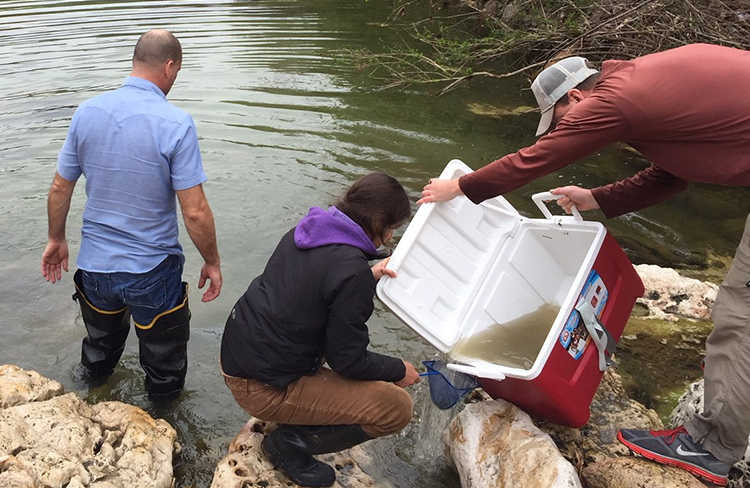Finding Fresh Flow for Fish
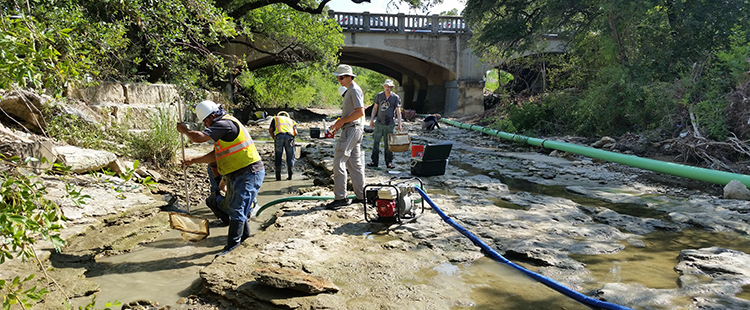
Crews lower water levels in Shoal Creek before starting a construction project.
Our environmental scientists greatly value the wildlife in Austin’s creeks and work hard to save fish and other aquatic inhabitants when creeks are impacted. Sometimes the City’s own projects are the source of the disturbance. For example, construction projects to stabilize creek banks or repair infrastructure require temporarily draining the water from sections of a creek. Historically, these kinds of projects have impacted a great number of fish, but since 2012 this practice has changed for the better. According to required permitting from Texas Parks and Wildlife Department (TPWD), projects that include lowering water levels now start with a fish relocation effort as standard practice.
Moving fish to safety
Project staff place temporary “cofferdams,” or watertight enclosures, to block off the upstream and downstream ends of the construction area and run a pipe around the site to allow water and fish outside of the area to continue moving downstream. Staff then set up pumps that drain the water in the construction area down to small puddles. Screens on the intake end of the pumps prevent fish from being pulled out. Crews use dip nets to quickly scoop up the fish from the construction area and place them in coolers of oxygenated water.
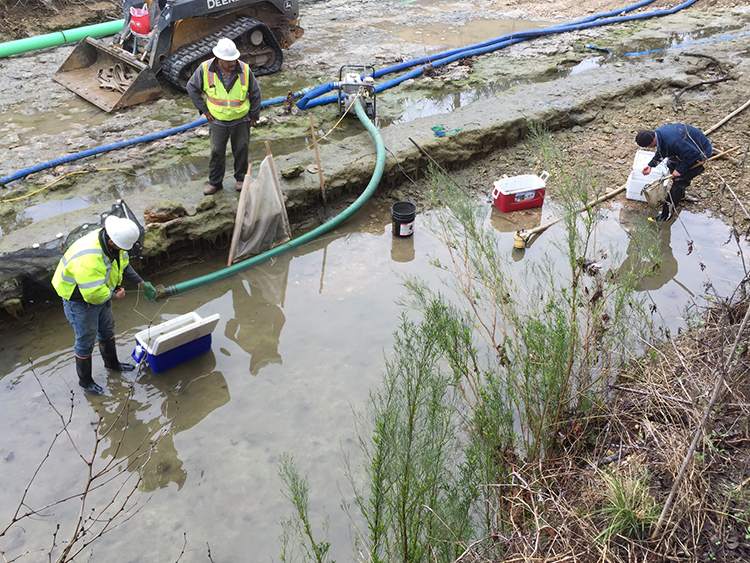
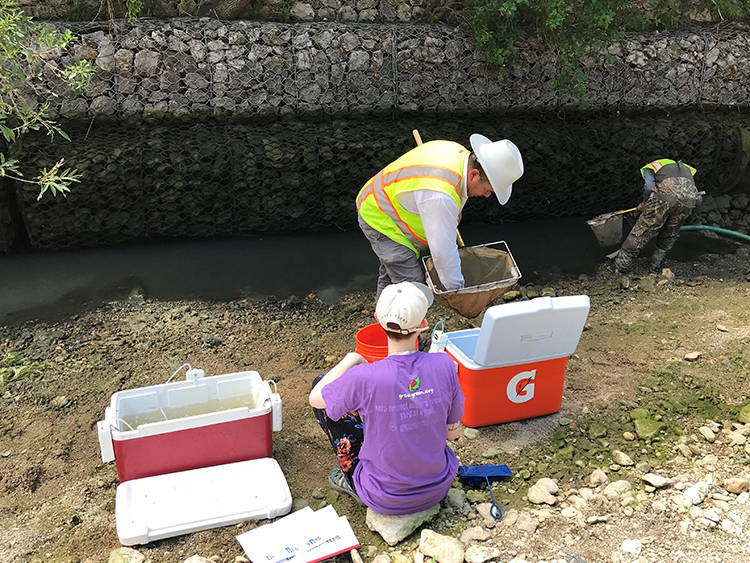
Crews prepare the construction area and use dip nets to collect the fish.
Our biologists identify and count the types of fish collected. Biologists quickly move the native fish to a pre-selected area with the appropriate size and habitat quality to minimize stress to the fish. Usually this area is just upstream or downstream of the construction site.

Coolers of oxygenated water hold the fish until biologists identify, count, and release them into another section of the creek.
How many fish have we relocated?
Since 2012, our environmental scientists have helped at several projects and relocated more than 35,000 fish. Relocated fish species include bass and other sunfish (e.g. bluegill, green sunfish, long ear, etc.), mosquitofish, shiners, Rio Grande cichlids, bullhead catfish, and central stonerollers. Most of these efforts have involved relocating 1,000 – 2,000 fish from small pools. One major effort for a stretch of Shoal Creek in Pease Park during the summer of 2015 resulted in the move of 26,144 fish! This was an enormous project, lasting more than a year and requiring nine fish relocations.
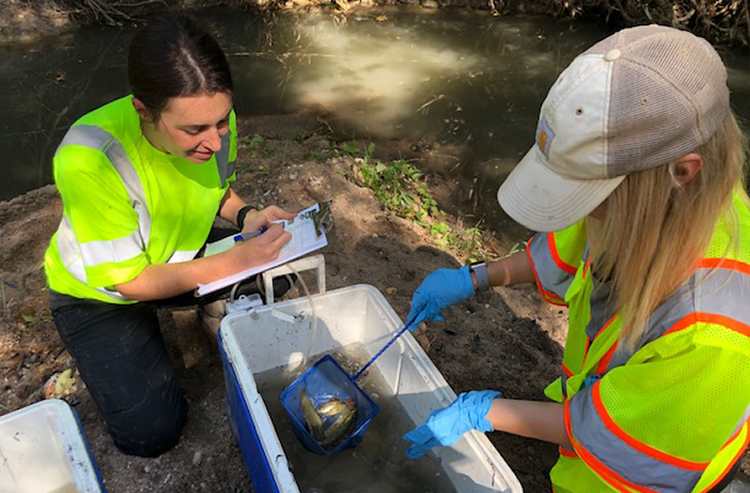
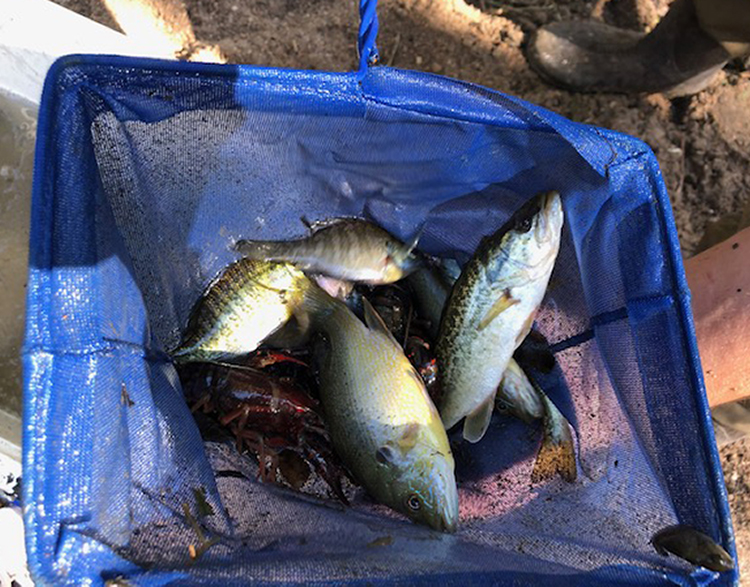
Our scientists have relocated more than 35,000 fish since 2012.
Our biologists help other wildlife to safe ground too! They have moved turtles (red-eared slider, common snapping, and softshell), crayfish, large bugs, snakes, and more.
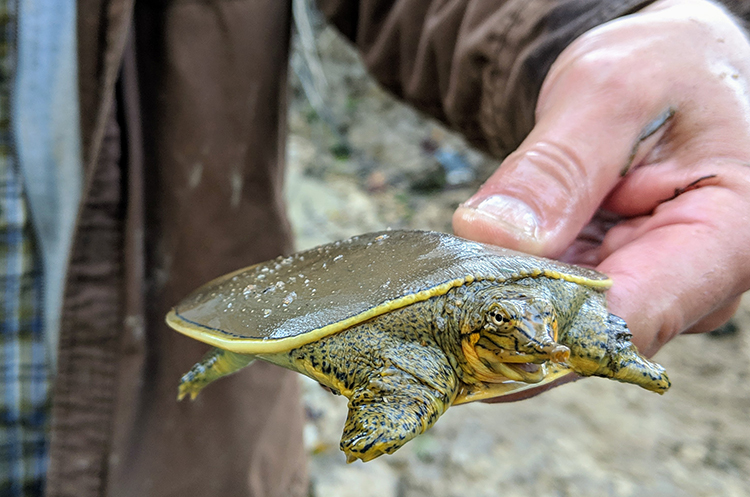
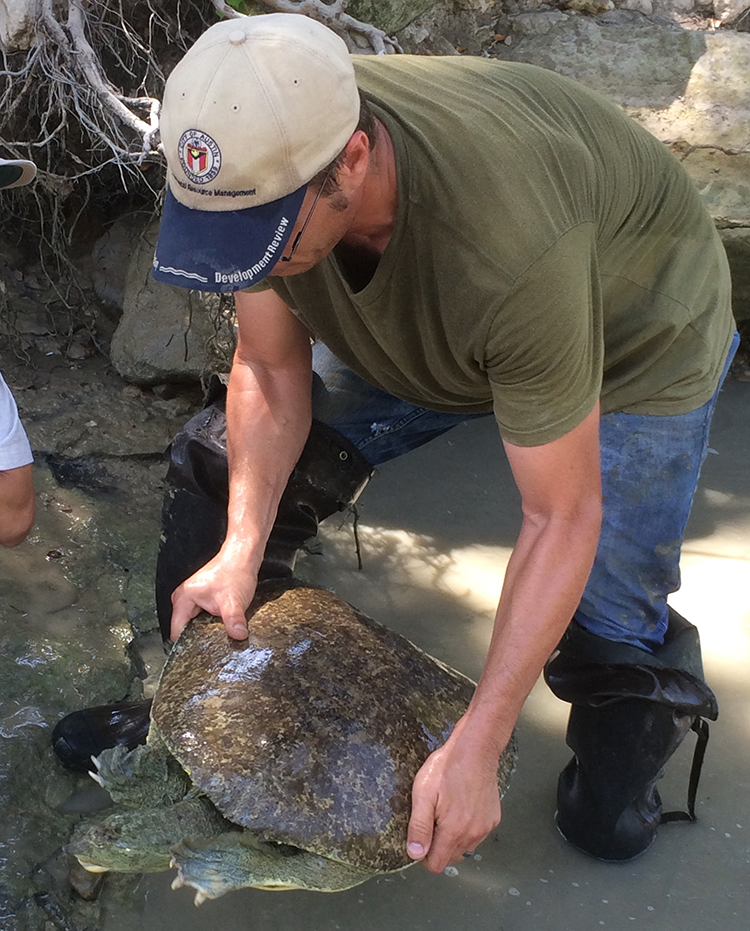
A biologist moves a softshell turtle from a construction area to a safe location.
Wildlife relocation work is strenuous, dirty, and very difficult in the summer months, but our scientists are dedicated to the work and proud of the results. Go Team! If you’d like to learn more, please visit www.austintexas.gov/watershed_protection/publications/document.cfm?id=339473.

